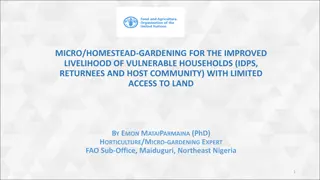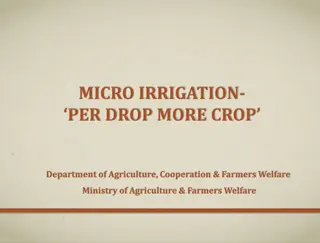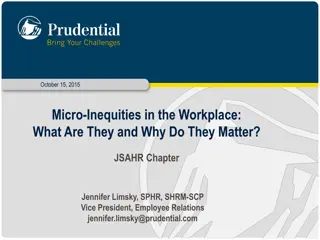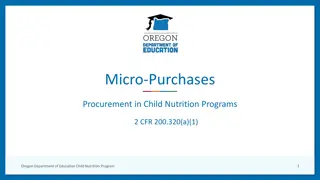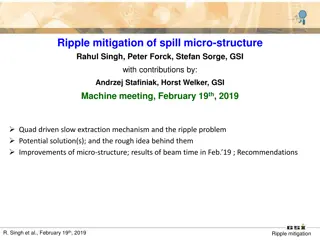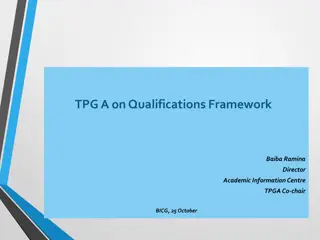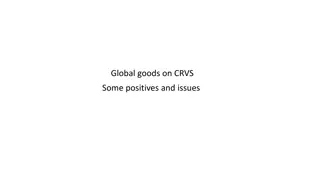
Optimizing Blood Microbiology Testing for Transplant Centers
Explore the detailed journey of The London Clinic in implementing advanced methods for blood microbiology testing to enhance transplant outcomes. Discover their validation strategies, impact on key performance indicators, common organisms identified, and challenges faced over 24 months of data analysis.
Download Presentation

Please find below an Image/Link to download the presentation.
The content on the website is provided AS IS for your information and personal use only. It may not be sold, licensed, or shared on other websites without obtaining consent from the author. If you encounter any issues during the download, it is possible that the publisher has removed the file from their server.
You are allowed to download the files provided on this website for personal or commercial use, subject to the condition that they are used lawfully. All files are the property of their respective owners.
The content on the website is provided AS IS for your information and personal use only. It may not be sold, licensed, or shared on other websites without obtaining consent from the author.
E N D
Presentation Transcript
BACKGROUND The London Clinic perform ~100 BMH s per annum (250-300 bags) Currently performing almost all of the BMH requirements for donor registries (AN, DKMS, BBMR) in the UK Core BMH team consists of one of 4 Haem consultants, on rotation plus a BMT coordinator 20 years PLUS BMH experience of each individual involved Most experienced team in the U.K. and possibly Europe-wide BMH micro testing carried out via blood culture bottles according to the standards for microbiology investigations (SMI)- 5-7 days BacT/ALERT, plus 5 days terminal subculture (total 12 days culture)
SOLUTION Investigation into methods and testing used at TLC Paediatric BacT/ALERT bottle used alone - this supported the growth of facultative anaerobes and not obligate anaerobes those microbes deep within tissue layers Validation into use of adult anaerobic bottles commenced for both small volumes and material type (BMT and PBSCH). Manufacturer only validated these for 8-10mls of whole blood Following successful validation adult anaerobic BacT/ALERT bottle was incorporated into testing regimen using 2mls of BM
WHAT HAPPENED NEXT? (OR: MORE PROBLEMS!) Validation strategy Discussed at SCUG 29 (Bristol 2019)-TG Validation results shared at SCUG 30 (Nottingham)-IB Results Shared with donor registries- impact on KPI (Frequency of positive BMH s was never 5%) Shared with HTA Data collected for 2 years on organism type, frequency, physical conditions of collection area, staff competencies and recipient sequelae
REVIEW OF 24 MONTHS OF DATA: I 70% of transplant centres responded to a request for micro results 57% did micro test the product 32% of harvests found positive at TLC were found negative at the transplant centre Most common organisms noted: Organism: 1. Cutibacterium acnes 2. Staphylococcus epidermidis 3. Staphylococcus capitis % positive bags 36 19 15
REVIEW OF 24 MONTHS OF DATA: II Double chlorhexidine clean created more positives! Source of contamination likely to be the skin plug that may be created when piercing deeper skin layers where anaerobic bacteria reside Data indicates that most of the positives were found in the first 5-7 days of culture (not in terminal sub-culture), therefore faster growing organisms were most frequently isolated. Faster growing skin organisms means a decreased window for antibiotic cover for the recipient at the transplant centre
REVIEW OF 24 MONTHS OF DATA: III Organisms were noted equally in bags 1 or 2, rarely in bag 3 No operator bias noted Clusters but no seasonal grouping of positive results noted over two years There was no impact found from audit deficiencies or air flow investigations BMH aerobic skin organism contamination has not increased over the 24 months, as anticipated, indicating that skin cleaning is still effective.
REVIEW OF 24 MONTHS OF DATA: IV Few (2) non-skin related organisms have been identified over this time period Lastly, no reported recipient adverse events noted: temperature on reinfusion, rigors, delayed engraftment Propose that the contamination of BMH collections by common skin obligate anaerobes from deeper skin layers is a complication of the harvest procedure and does not result in adverse reactions in the 24 months of data investigated. Therefore, does this require SAEAR reporting?



